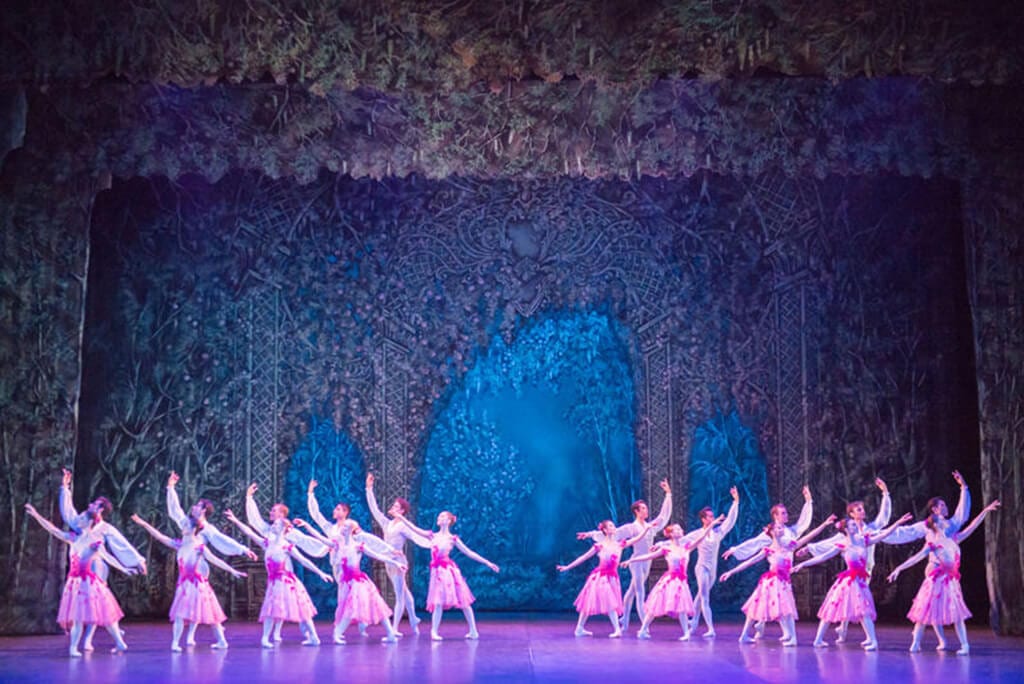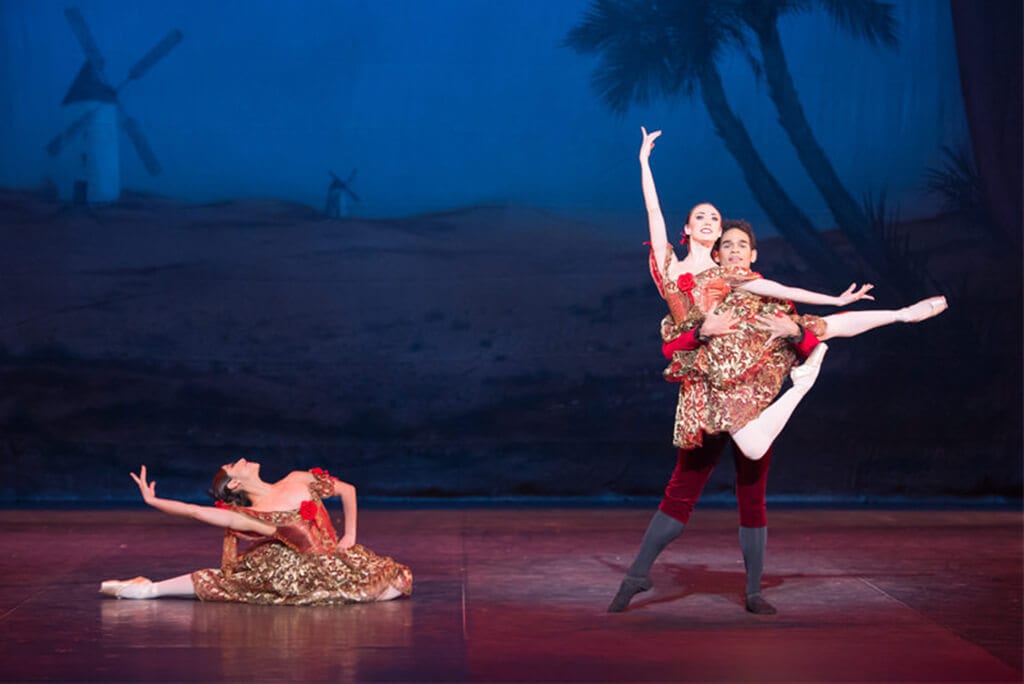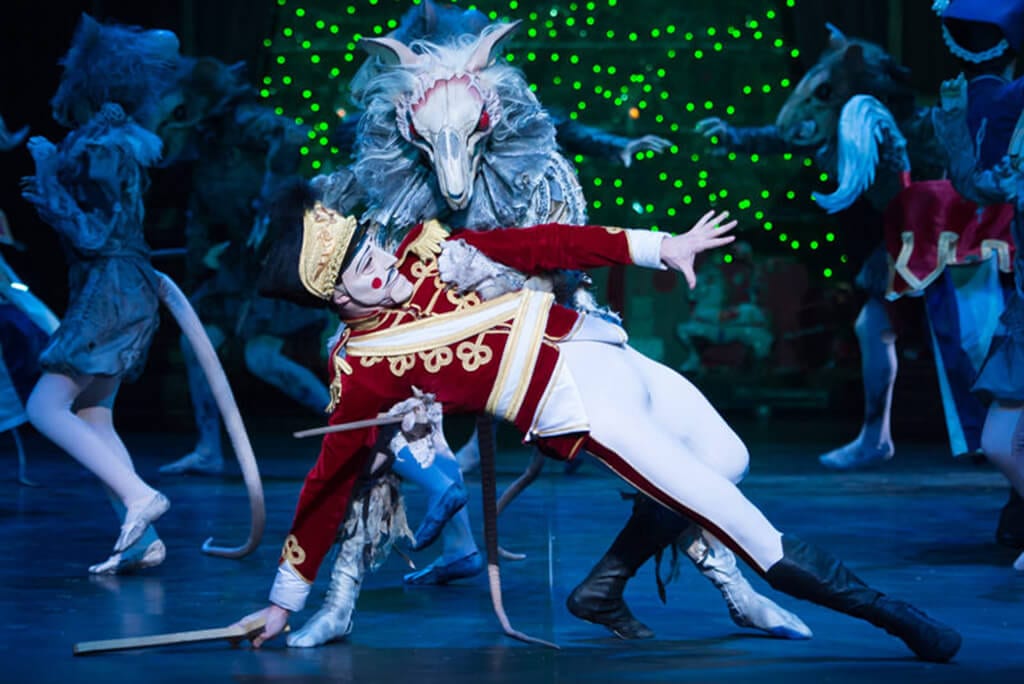There is often a tension in ballet between bravura technique which dazzles the audience but becalms the story, and a focus on development of character, which offers charm and emotional depth, but is short on athletic display. The ballets that last are those that find original ways of combining the two. One reason that The Nutcracker has become such a perennial favourite is that after setting up such a strong story in Act I it then opens out to offer a platform for a sequence of character dances in Act II that offer up a feast of dance combinations of rare panache and grace. Moreover, for such a well-known work there is still great scope for directorial and choreographic invention – Hoffman’s original story can be taken flexibly in any number of dark or frothy directions (as Mark Morris has done in The Hard Nut), and Tchaikovsky’s score is a kaleidoscope of colours, moods, and choices rather than a definitive template that must be followed to the letter.
English National Ballet’s current production was first seen in 2010: it strikes a fine balance between the traditional Christmas spectacle of snowscapes and feasting, and Clara’s darker nightmarish fantasies. The story is relocated to Edwardian London, and the interior scenes have a well upholstered opulence that summons up the world of Fanny and Alexander more than that of Dickens. There is an impressive attention to detail in Peter Farmer’s staging that matches the thematic interconnections of the music, so that major elements of the story are neatly anticipated in earlier dramatic devices. Above all the moments of wonder and fantasy, which have to be transformative, if the piece is to work as a whole, were well imagined: the toys came to life at midnight with plenty of surprises, and a balloon flight provided an elegant means of wafting Clara, Drosselmeyer and his Nephew away to the winter wonderland of Act II. The set pieces for the snowflakes and the flowers were quite traditional in execution but thereby served to give a better, more discreet context to the main pas de deux between Clara and the nephew which are at the emotional heart of the piece.
Wayne Eagling’s choreography in the first half reminded me of Ashton, or at least the story-focused Ashton of Alice’s Adventures in Wonderland. The dance sequences seemed an extension or elaboration of naturalistic moves so that we saw very clearly how the characters related to Clara (Erina Takahashi) and to each other. We moved into a different, spiky, kinetic register with the emergence of the Mouse King (Shevelle Dynott), whose sequences are a vital, necessary contrast to the sweetness elsewhere. There was no shortage of virtuosity in the second half, particularly from Yonah Acosta as the Nephew, whose leaps, lifts and full-length strides in the up-tempo numbers, showed a glimpse of his major talent and potential. Takahashi gave a performance of grace and poise but also told the story of Clara’s gradually emerging assurance and confidence. As the child Clara, Cheryl Heung was both skilful and affecting in a role which is very challenging for a young person. Fernando Bufalá captured the stiff bravado and Petrushka-like vulnerability of the Nutcracker, and James Streeter discreetly compered proceedings as an elegant Drosselmeyer.
It is easy to overlook the contribution of the orchestra on these occasions, but the ENB Philharmonic found moments of both solo virtuosity, chamber-music refinement, and technicolour splendour under the deft direction of Misato Tomita. Speeds were uniformly well chosen to meet the needs of the dancers, while the carefully calibrated transitional interludes were vital in conjuring the new levels of wonder towards which everyone was working.





